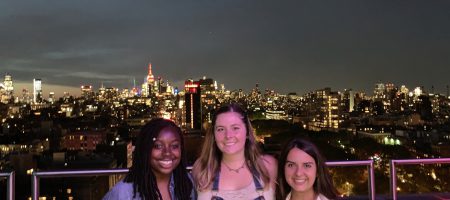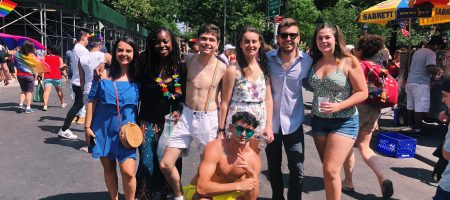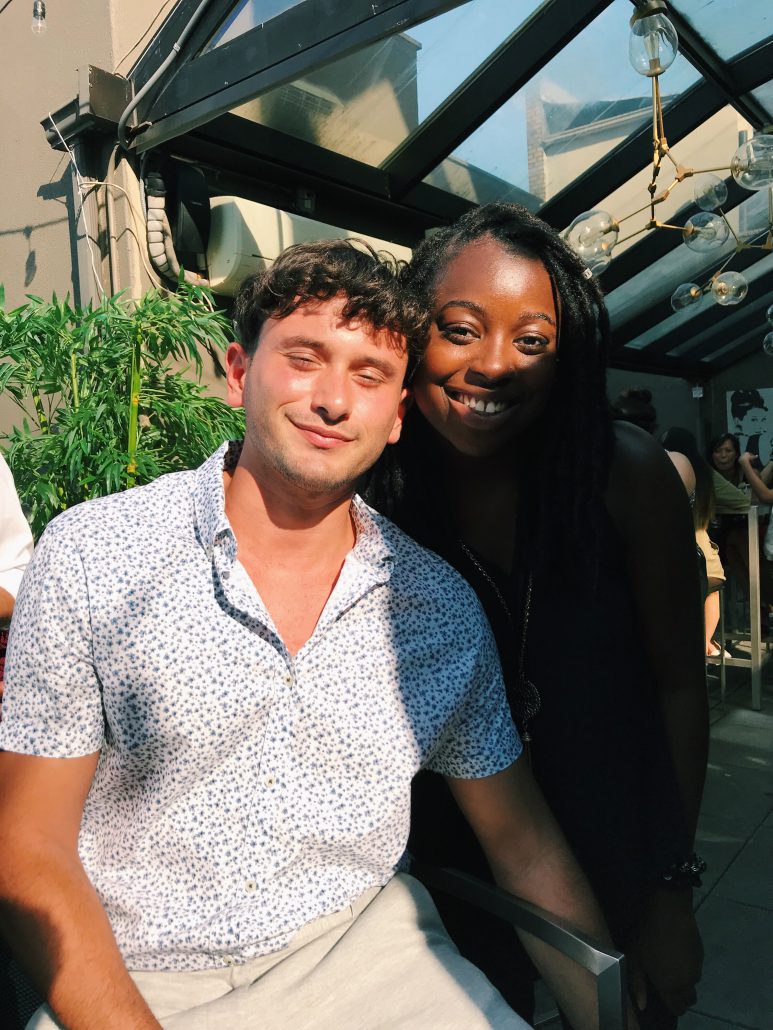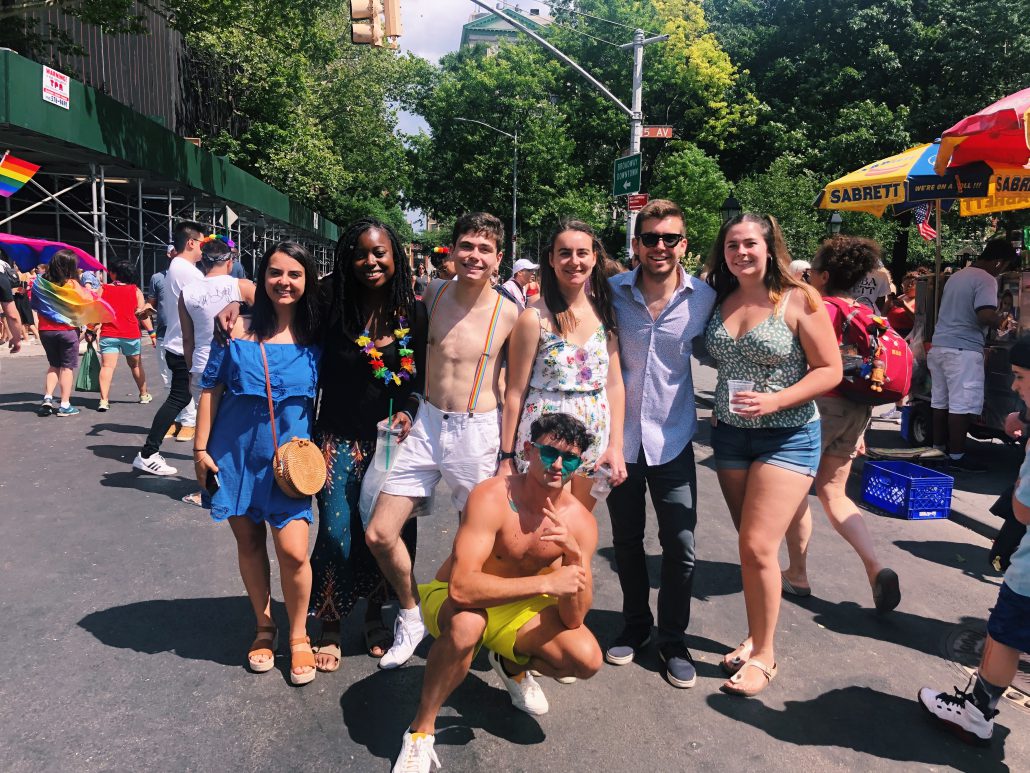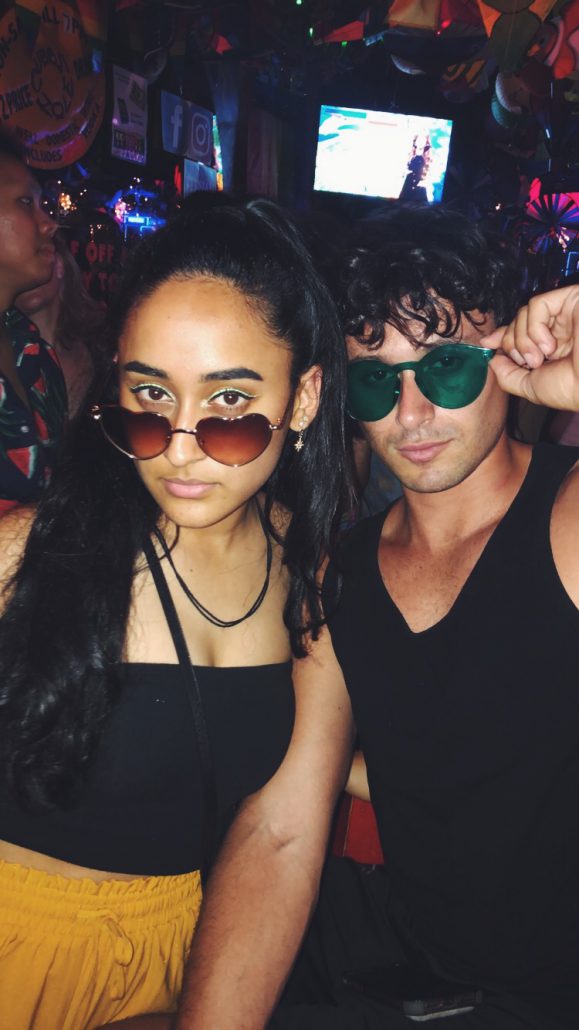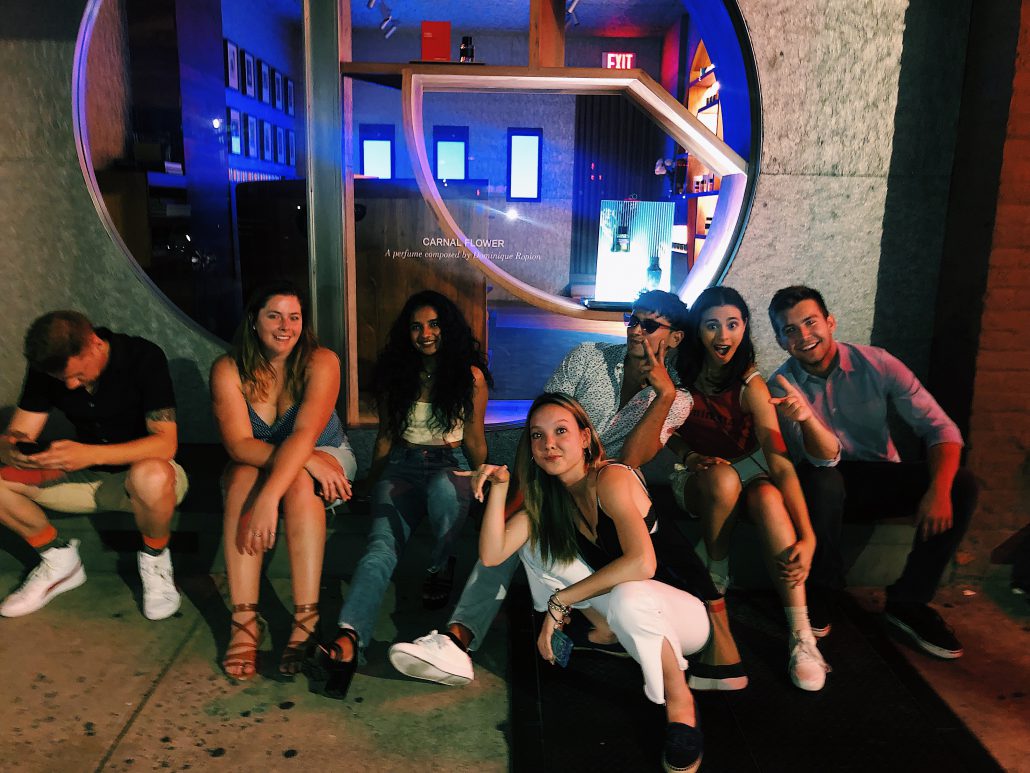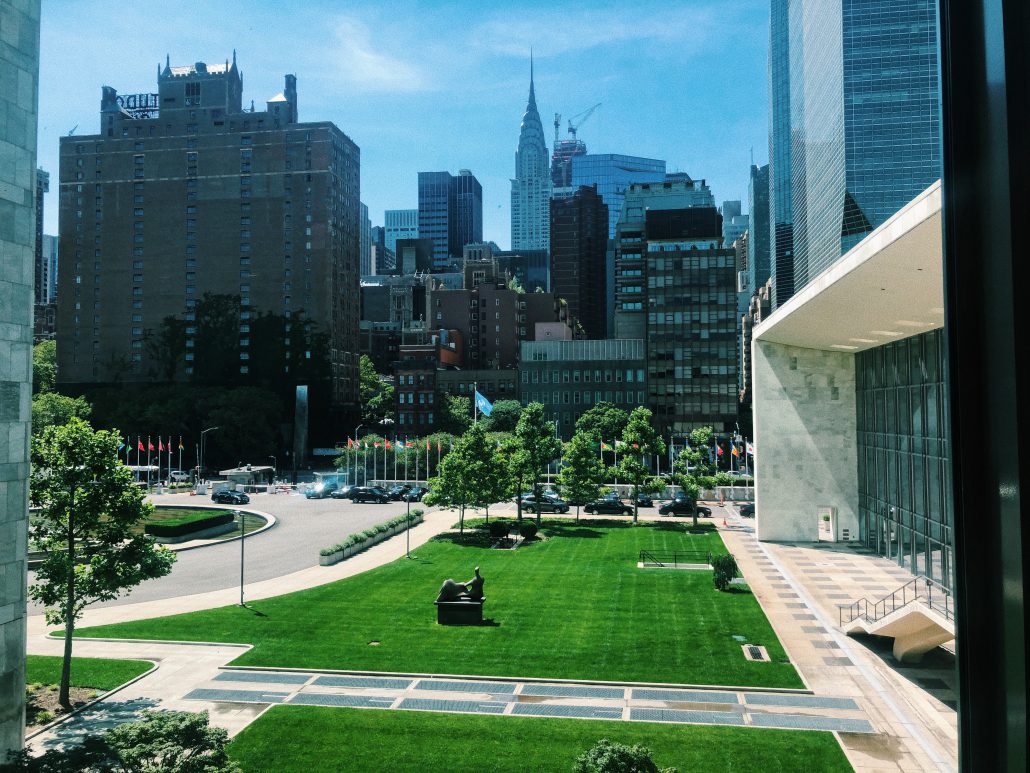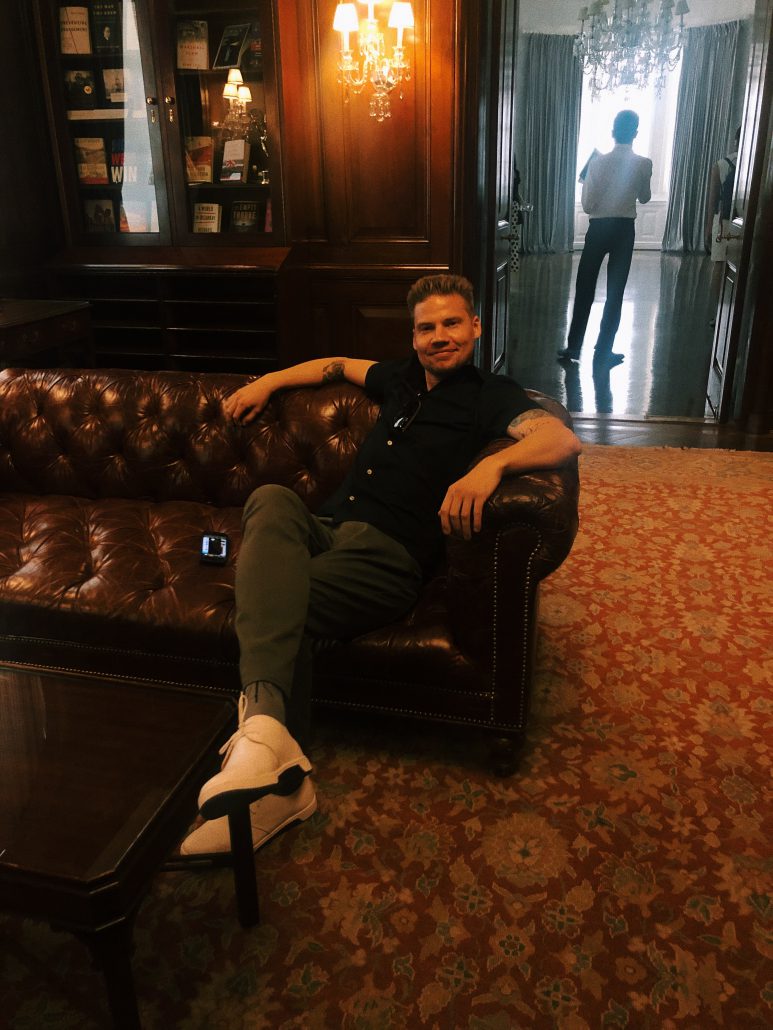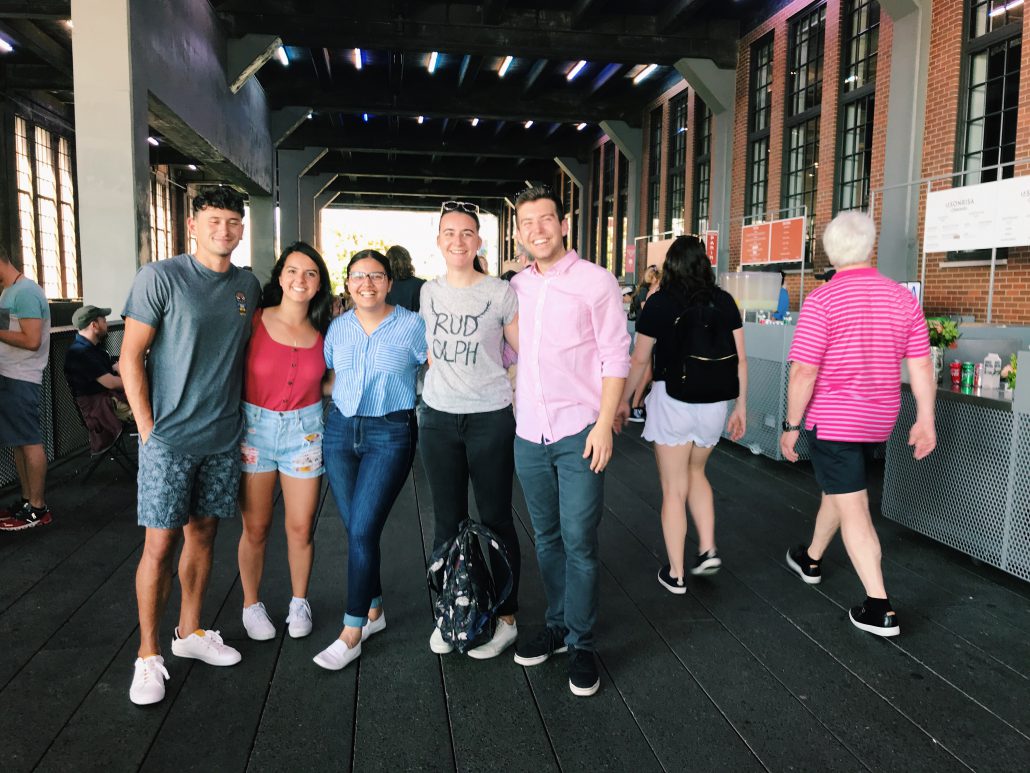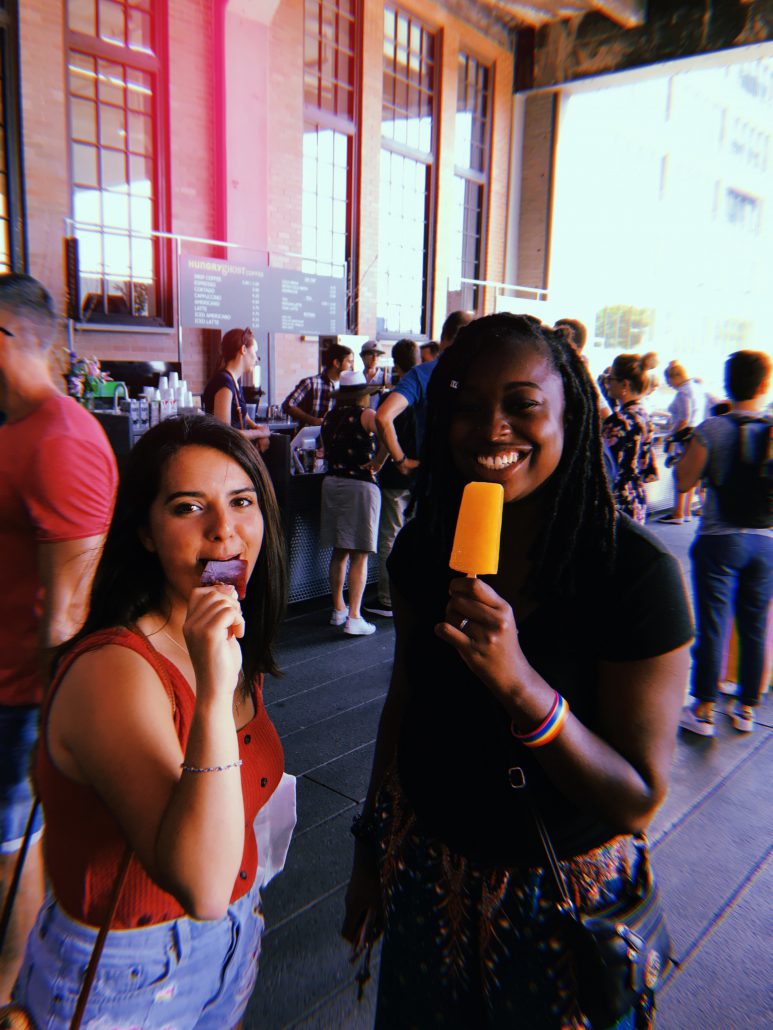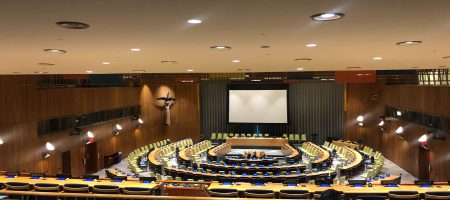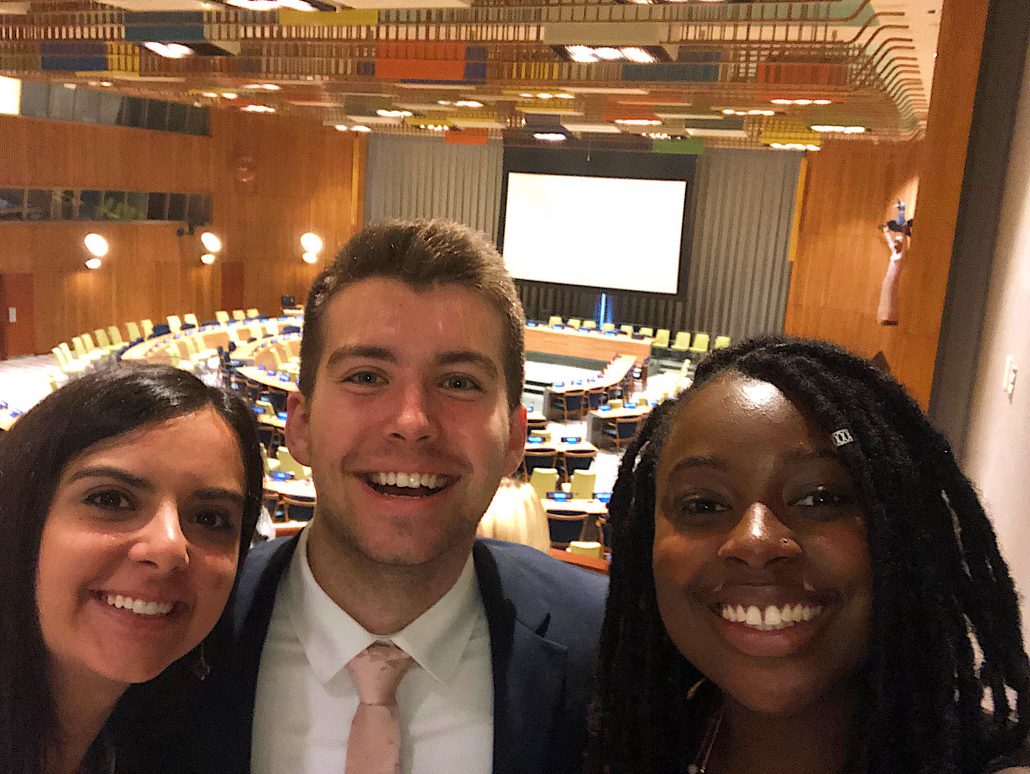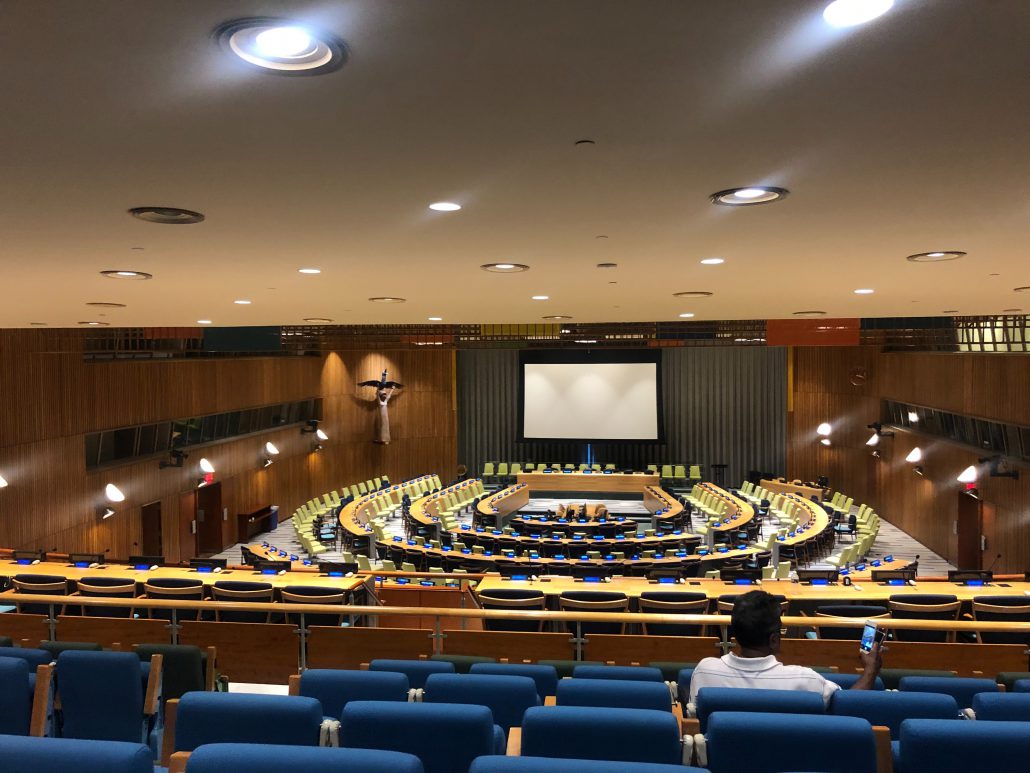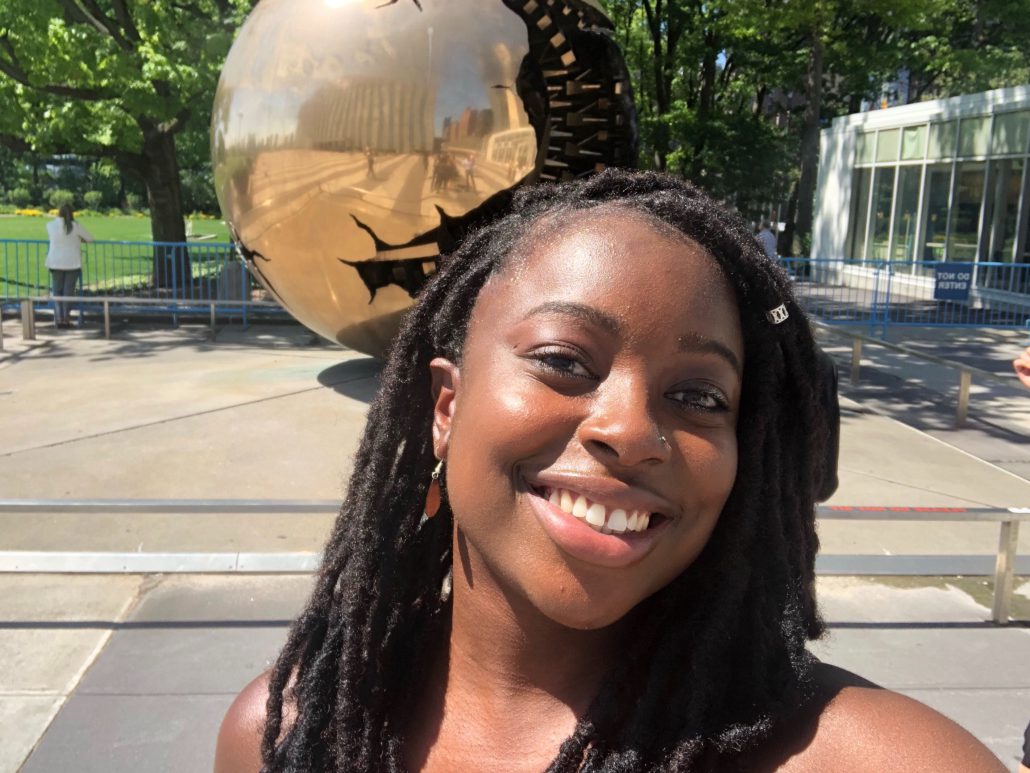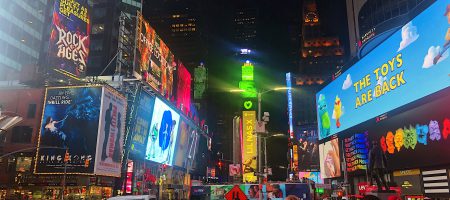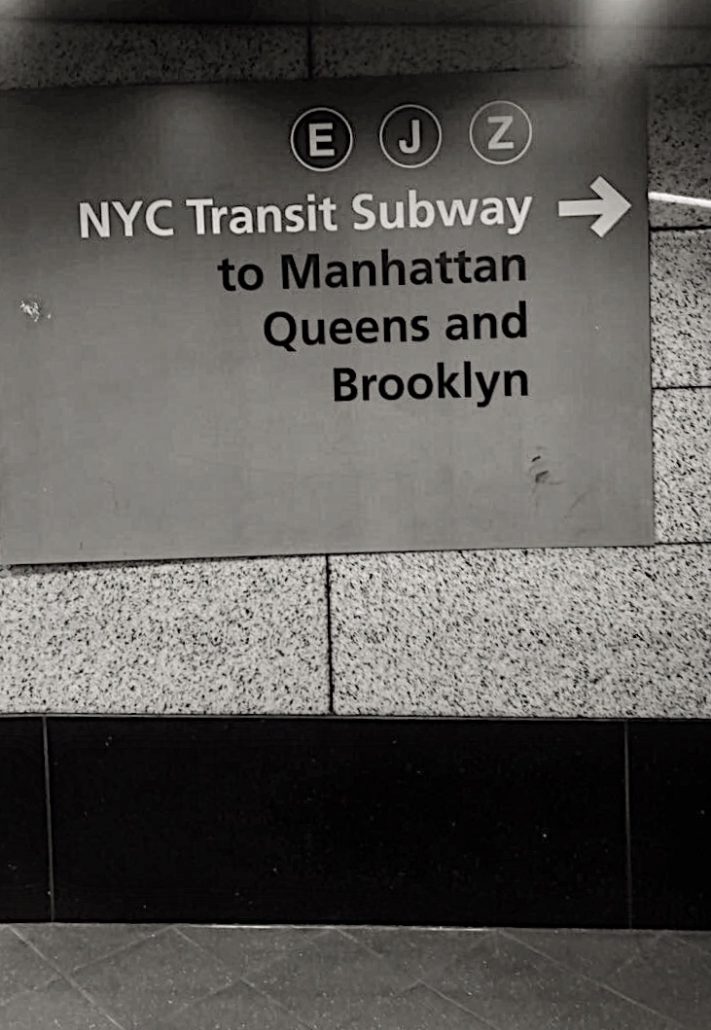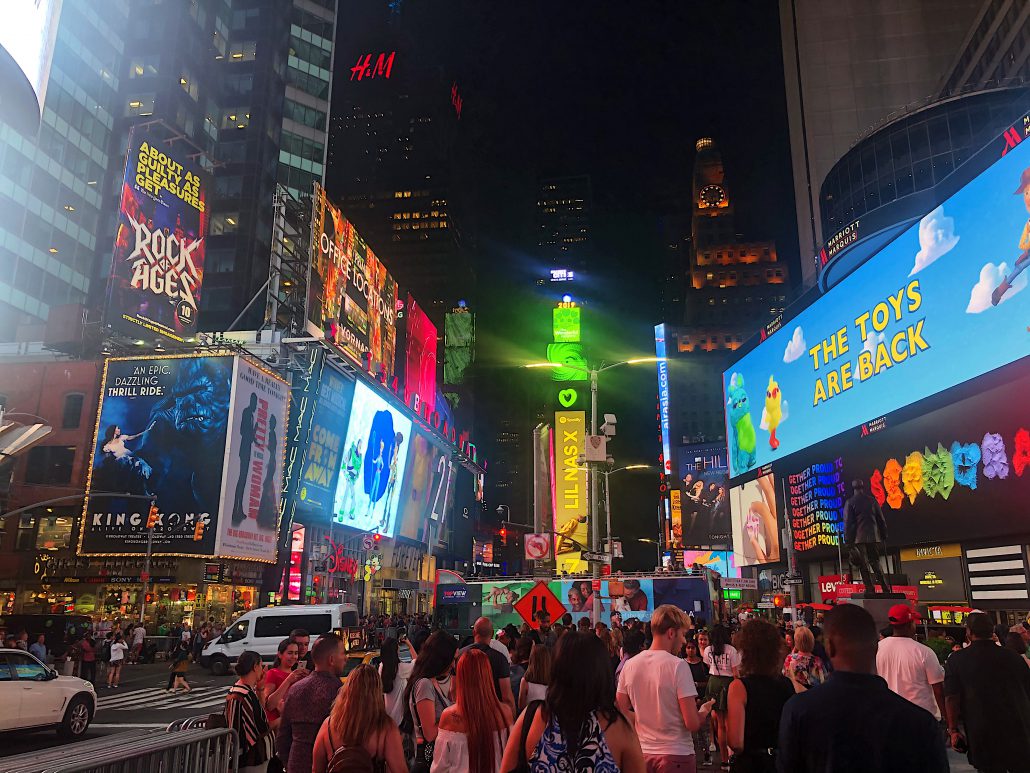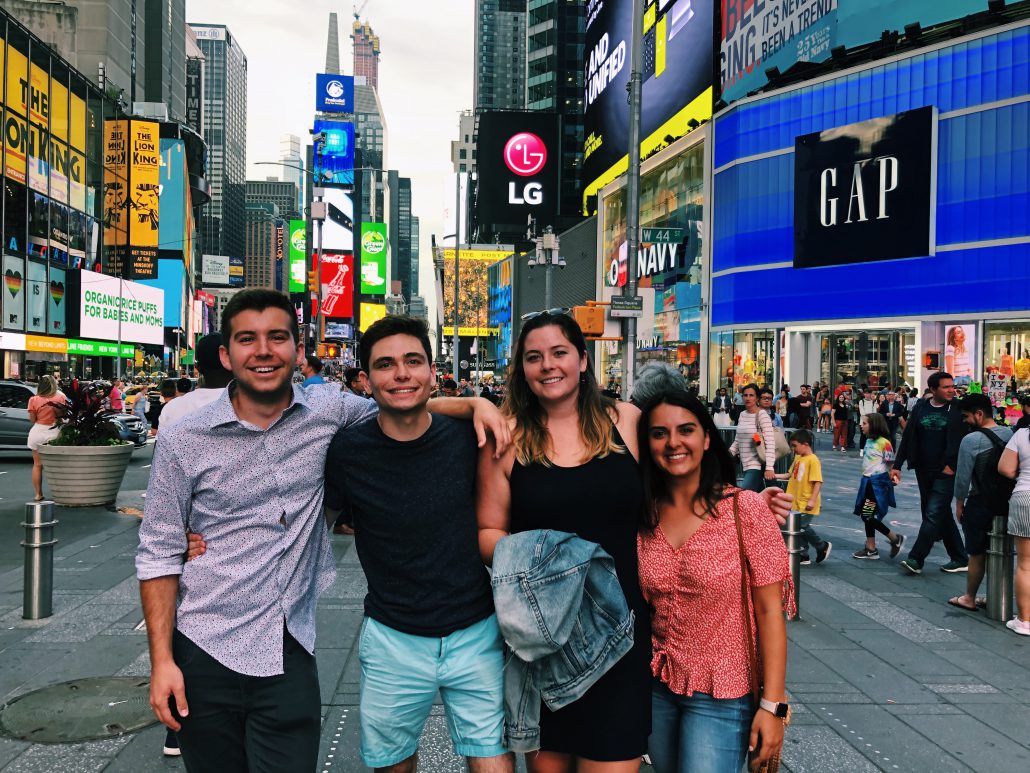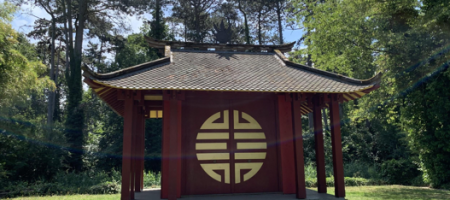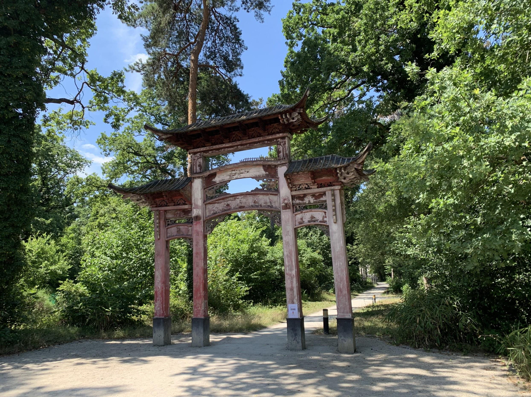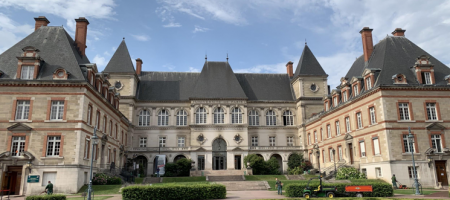New York | Little Italy, Chinatown, & Governor’s Island
By Kyra Baffo
Little Italy and Chinatown are conveniently located right next to each other, and offer incredible options if you are in the mood for Italian or Asian cuisine. We got here via the subway (just hopped on the D line from Washington Square Station and go off at Grand Street Station). We kicked off our evening in Chinatown, we feasted on sushi and chicken teriyaki before making our way up north to Little Italy. There are literally endless places to eat, so it might be helpful to come with a few ideas in mind on what you want to try. Or you can take the spontaneous route and find something along the way that looks tasty. A little warning about Little Italy, you will be approached by tons of restaurant owners offering you delicious pasta, pizza, and appetizers. And perhaps discounted wine in order to convince you and your friends to eat at their restaurant. Don’t be fooled! Maybe I am a little pessimistic, considering a group of friends walked into one of the restaurants only to find that the menu they were shown outside of the restaurant had double the prices once they sat down! As you can see, you definitely want to watch out for petty scams like that- as this is a very touristy area of the city. There a dozens of dessert stations, that serve world class cannolis and cakes. If you’re looking to find a few discounted gifts to bring back home to your family then this is the place to shop. There are tons of gift stores around this area that sell NYC paraphernalia and clothing. All in all, Little Italy and Chinatown are must dos on your NYC itinerary. Come on an empty stomach and maybe a few restaurant ideas in mind beforehand and you will have a great experience.
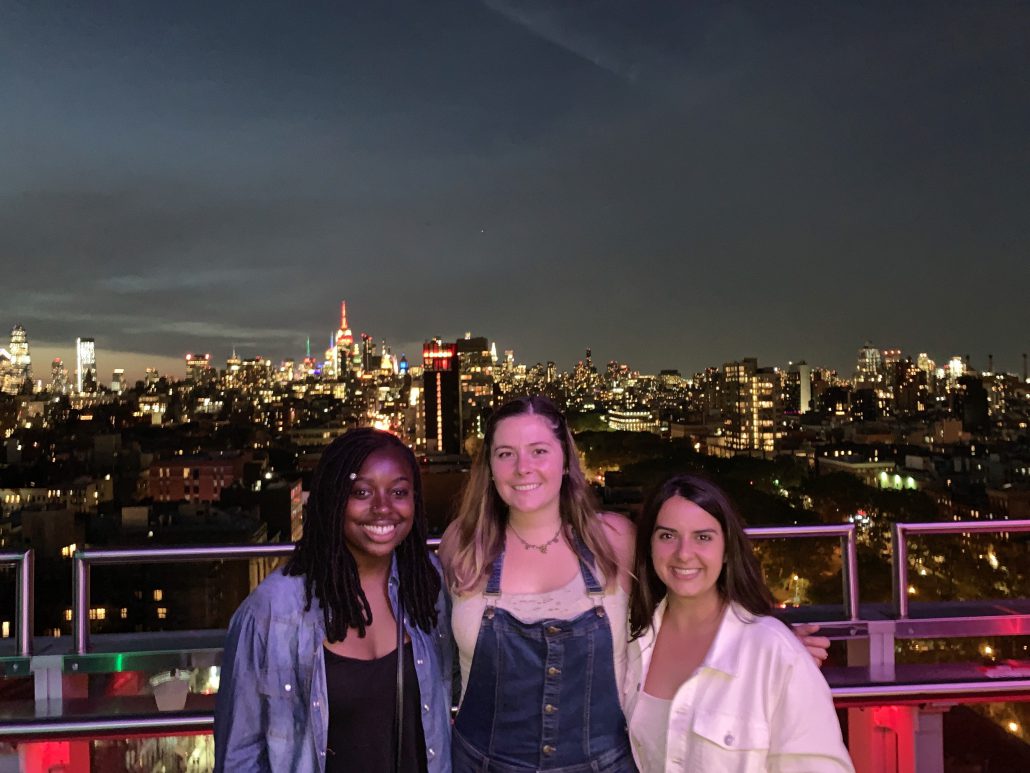
Little Italy and Chinatown are conveniently located right next to each other, and offer incredible options if you are in the mood for Italian or Asian cuisine. We got here via the subway (just hopped on the D line from Washington Square Station and go off at Grand Street Station). We kicked off our evening in Chinatown, we feasted on sushi and chicken teriyaki before making our way up north to Little Italy. There are literally endless places to eat, so it might be helpful to come with a few ideas in mind on what you want to try. Or you can take the spontaneous route and find something along the way that looks tasty. A little warning about Little Italy, you will be approached by tons of restaurant owners offering you delicious pasta, pizza, and appetizers. And perhaps discounted wine in order to convince you and your friends to eat at their restaurant.

Don’t be fooled! Maybe I am a little pessimistic, considering a group of friends walked into one of the restaurants only to find that the menu they were shown outside of the restaurant had double the prices once they sat down! As you can see, you definitely want to watch out for petty scams like that- as this is a very touristy area of the city. There a dozens of dessert stations, that serve world class cannolis and cakes. If you’re looking to find a few discounted gifts to bring back home to your family then this is the place to shop. There are tons of gift stores around this area that sell NYC paraphernalia and clothing. All in all, Little Italy and Chinatown are must dos on your NYC itinerary. Come on an empty stomach and maybe a few restaurant ideas in mind beforehand and you will have a great experience.

Govna’s Island (Governor’s Island)- truly a land of dreams. Just for a little background, the island is just south of Manhattan, accessible via a $2 ferry, and its existence dates all the way back to the American Revolution. Today, the island mostly serves as a day-trip destination and offers visitors a number of interesting recreational activities. The catch, however, is that you need to make sure you check what activities you are interested in doing before you make the trek. My group and I were interested in ziplining, kayaking, and riding bikes on the island, only to find out that nearly every outdoor activity was reserved for the weekend (we were there on Wednesday). We ended up renting Surreys, which are basically group bicycles, while some others rented their own personal bikes. If you are going with a large group then I would definitely recommend renting Surreys, as they make it cost efficient for everyone and allow you up to 45 minutes to ride around the island. If you end up going on a weekend, you will find plenty more activities to try out. This island is pretty small, but manages to host a number of events. Just to name a few- they have gardening, museums, parks and hammocking areas, a really interest junkyard playground, and festivals. There is not many shady areas around the island, so please do not forget sunscreen and/or a parasol when you visit. Have fun! ?
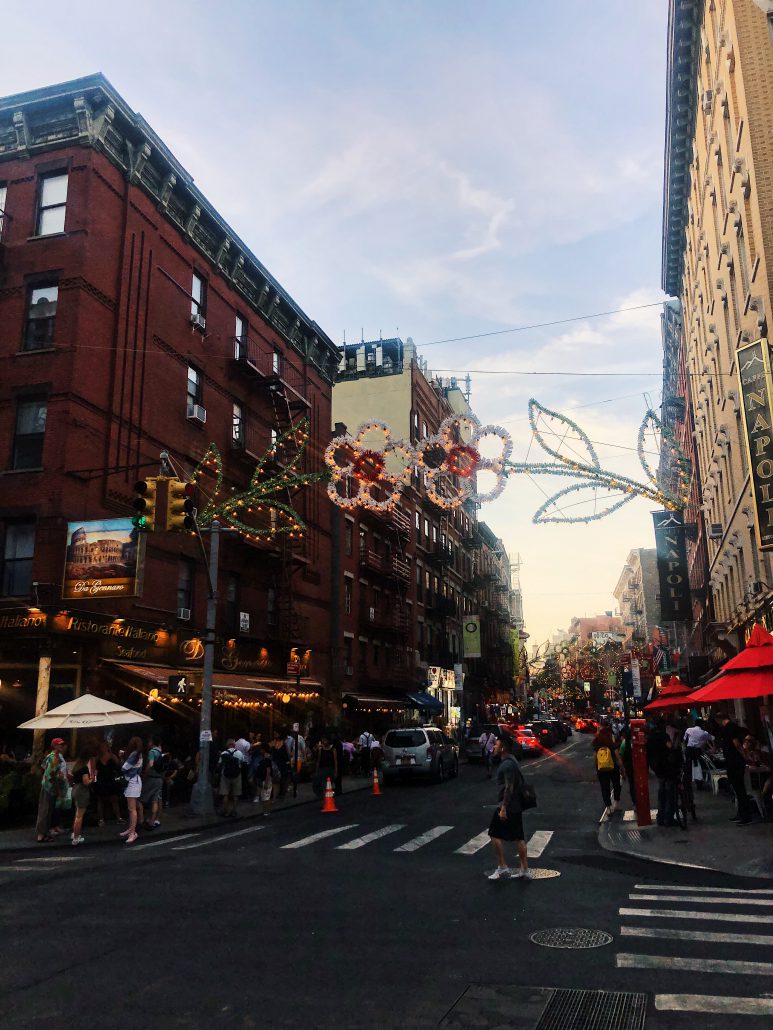
Kyra studied abroad in New York in Summer 2019. https://ieo.ucla.edu/travelstudy/GlobalStudies-NewYork


